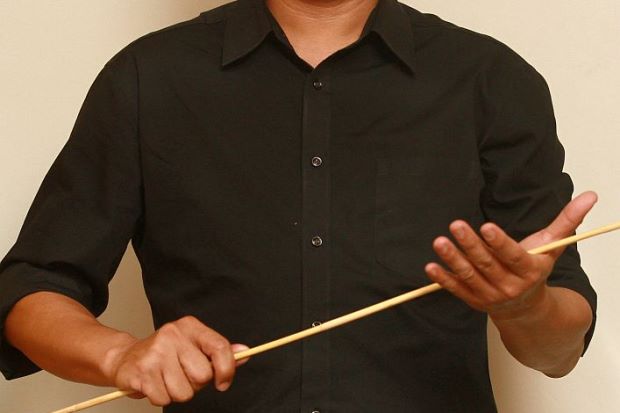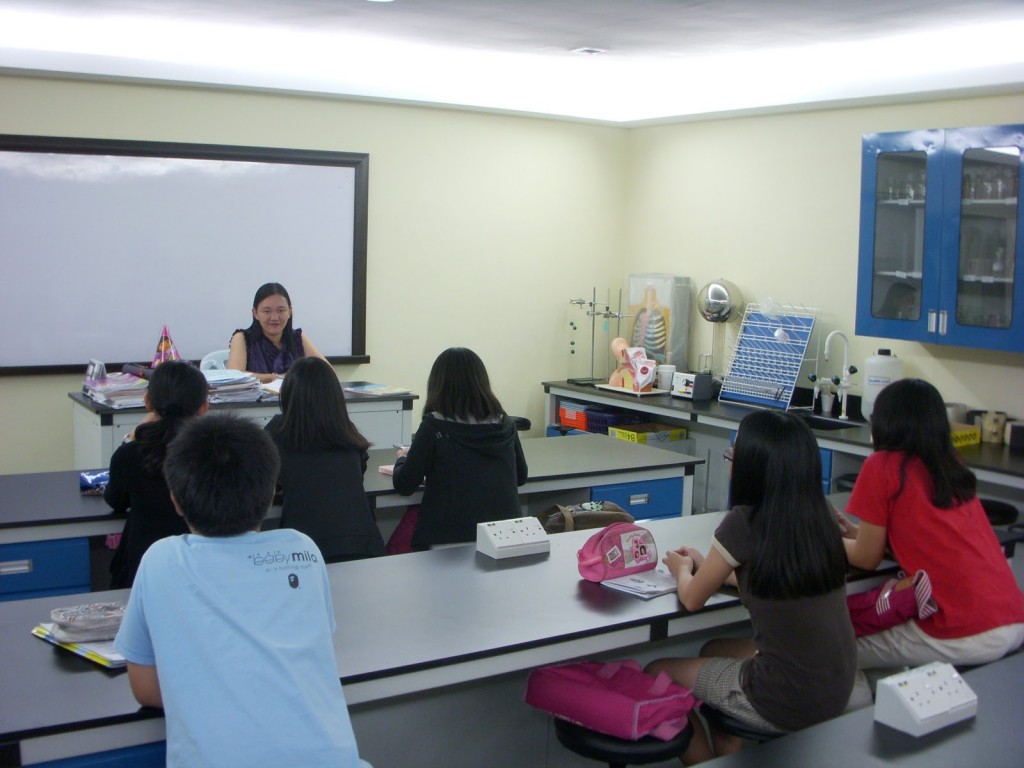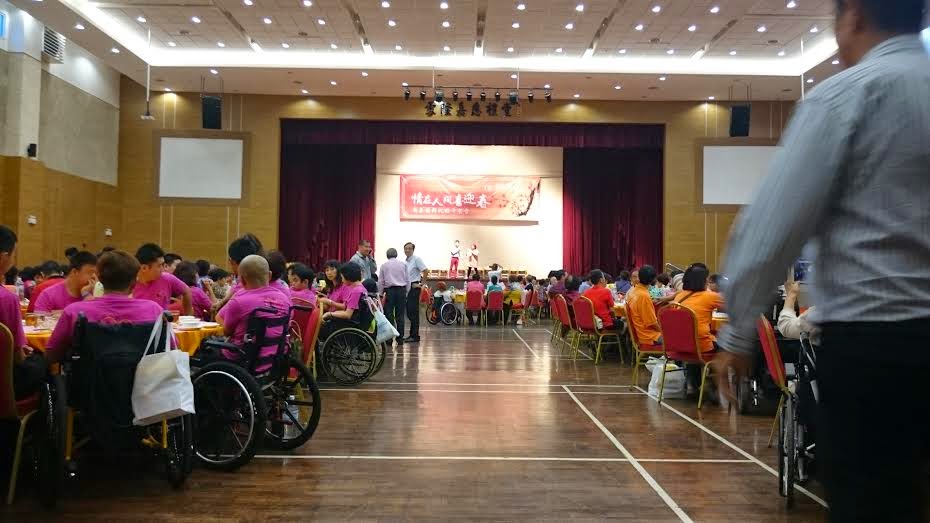6 differences between Chinese and Kebangsaan schools, told by someone who attended both!

- 3.0KShares
- Facebook2.4K
- Twitter79
- LinkedIn9
- Email148
- WhatsApp311
*The Chinese captions in the feature image translate to “The teacher over there is looking at me”.

When I was seven, my parents sent me to a Chinese primary school, SJK(C) Khe Beng. This was because they wanted me to learn about my own culture and to be able to communicate with my Mandarin speaking relatives.
So, once my UPSR examinations were done and dusted, I was then presented with two options- (1) study at the Chinese Independent High Schools (aka the Du Zhong schools like Chung Hwa Independent High School) or (2) choose to attend the government secondary schools (aka the SMK schools).
In the end, my parents had me continue my education at a kebangsaan secondary school mainly becuz studying at a Du Zhong school can cost quite a fortune!

Yet, at the start of the transition from SRJK(C) to SMK, I realized that things were gonna be different and would continue to stay that way. Here are 6 differences that I’ve personally observed:
1. Classes in Chinese schools were definitely stricter
You’d probably have heard this one. Back in my Chinese school, the teachers had this amazing ability to make sure we never fall asleep during classes. Or maybe… it was due to the fear of getting punished. Of all the punishments, we dreaded getting caned the most. Despite being strict with their teaching styles, it was clear that the teachers taught with passion.
In regards to caning, there’s a famous Chinese saying that goes: “To hit is to cherish, to scold is to show love” (Da shi teng, ma shi ai). This is akin to the Western idiom, “Spare the rod and spoil the child”.
“In my Chinese primary school, there was this carrot and stick culture. Students were often urged to be smart, to be the best, which in turn promotes a ‘kiasu’ (afraid to lose) culture.”-Siew Ming, 23.
However, there are several parties (including CILISOS) who have weighed in on caning as a form of punishment. The Parent Action Group for Education (PAGE) proposed more peaceful means of punishments such as performing social service. Their stance was based on the fact that Malaysia ratified the United Nations Convention on the Rights of the Child (CRC) back in 1995, which declares protection for children from all kinds of physical or mental violence.

However, it was a 180 degree shift in my Kebangsaan school. (Mine, at least!) For starters, teachers did not bother to threaten us with caning anymore. During some classes (Pendidikan Moral for example), teachers made us engage in discussions sessions based on the current topic of the textbook. It was little things like this that taught us the skill of forming and sharing our own opinions confidently.
Meanwhile, class discipline turned out to be super lax as teachers often left for meetings and as a result we were left unsupervised most of the time. Imagine the amount of fun we had…

2. Studying in Chinese schools meant perfect spelling and classes during holidays 🙄
Studying in a Chinese school guarantees you getting lots of homework every day. It’s no wonder then that some parents have concerns towards the way Chinese schools conduct their classes. Heck, there’s even an online support group set up for parents who have children studying in a famous Chinese school!
In my school, Standard 5 students had to sacrifice part of their year end holidays to attend mandatory holiday classes. Similarly, Standard 6 students were required to remain for their after-school classes in the months leading up to UPSR (usually from March to August). Apparently, this isn’t some special program that only existed in my school cuz schools like SJK(C) Subang have been known to do the same thing.

My time in SMK Kota Kemuning proved to be a different experience as teachers were not overly concerned with transforming us into top students. Yes, my secondary school did implement class streaming to a certain extent, but other than that, we weren’t pressure to excel in studies so much.

Besides that, I realized both schools had different views towards the important of homework. Whenever teachers graded our work in Chinese school, there was the risk of being caned us especially if they were displeased with our work.
Moreover, the one experience all Chinese school students can definitely agree on is the fear of doing poorly for our spelling, ejaan or tingxie exercises (basically the Chinese version of spelling). No one loved getting a few strokes of the rotan just because they were unable to spell a few words or write a couple of Chinese characters correctly. 😥
On the other hand, in Kebangsaan school, students could afford to be more complacent as teachers usually “rewarded” our work with the ubiquitous remark, “dilihat” (seen). Looking back though, the teachers might have been less stringent with our homework as they probably expected us to take charge of our own learning process.
3. Also, tuition centres were a bigger deal in Kebangsaan schools
Just like many students, I attended tuition classes during both my primary and secondary school days. Despite the perception that tuition classes are already a necessity of sorts for all students, studying in Kebangsaan school made me realize just how much students can come to rely on tuition centres just to pass their exams.

One possibly reason for the increasing reliance on tuition centres during Kebangsaan school could have been that back in Chinese school students had their extra classes. Even though it was just the extension of normal classes, they were more or less similar to tuition classes.
Regardless of how high the cost for tuition classes can be, parents are more than willing to fork out cash to ensure that their children get extra guidance on their weaker subjects.
“School is not enough. I don’t want to be negative so I won’t criticise anyone. I will just say that my boys need the classes for their future.”- Arnold, a concerned parent, as quoted in Free Malaysia Today.
It was only in Form 2 when I finally signed up for a tuition centre. Looking back, it was definitely a step up from your typical tuition classes. Everything there felt so commercialized. There were receptionists manning the front counter at the lobby while students waited there as though they were expecting an appointment.

At the very least, these tuition centres were obliged to provide us with decent class materials (which they delivered). As for the teachers, some were great, some were okay while the others were just content to rush through their lessons. Ah well, that’s tuition for ugaiz.
4. Students in Chinese schools usually pay extra fees (sometimes for good reasons)
If you studied in a Chinese school before, you’d know there were a number of other fees to look out for besides the standard PIBG and student insurance fees. For instance, there was a fee which functioned as a “support fund” for teachers teaching extra classes. Besides that, some money was also channeled into paying for the school’s maintenance and utility bills as the gomen subsidies do not always arrive on time.
You see, Chinese schools only receive partial funding from the gomen, which means that the school administration has to rely on other sources of funding such as collecting student fees, receiving private donations and even raising funds through charity events.

Moreover, those who attended computer classes in their Chinese schools would definitely recall paying class fees once every few months (or once per month depending on the school). However, in this case I believe those lessons were well worth the money as we were taught several useful computer skills ( using Microsoft Powerpoint, Excel and Word etc.) which believe me, are crucial for landing any office job these days.
While I didn’t end up paying for any extra fees (there was an optional fee for the school magazine though) in my Kebangsaan school, there was this concept of raising funds on our own. This was usually done through charity sales or school carnivals. Like many schools, these carnivals were always the highlight of the year as talented students would be invited to perform for the crowd.
5. Meanwhile, Kebangsaan schools seem more happening with many ‘koko’ activities
Every student, whether from a primary or secondary school, is obligated to participate in co-curricular activities (or koko for short). My Kebangsaan school for one, kept alternating between Wednesdays and Saturdays, whereas my Chinese school fixed Saturdays as the time for our koko activities.
And even so, my Chinese school would divide our koko time between clubs and extra classes (I kid you not!). We could only choose between the Red Crescent and the Scouts, and even then, it was focused more on the theoretical aspects as we were mostly confined to the classrooms.
Yet, it was a different ball game in my Kebangsaan school as we suddenly had so many clubs and societies to choose from. Besides the Red Crescent and Pengakap, there were the Kadet Bomba, Kadet Polis, Pandu Puteri and SPBT club to name a few. Eventually, yours truly ended up joining the Taekwando club and stayed there all the way till Form 5.

Another thing my Kebangsaan school did quite well was to ensure that every student had an equal opportunity to participate in sports related activities. While both schools already had their own mandatory PE classes, I was only introduced to the Sports Day and Cross Country (or Merentas Desa) events during my secondary school days. Aiks. Perhaps my Chinese school was selective of which students could participate in sports events?
6. Kebangsaan schools allowed for more interaction with classmates of different ethnicities
Before I go on, a small disclaimer here: not all students in Chinese schools (including mine) are Chinese. The truth is, many non-Chinese families do send their children there too, with Malay students currently forming 11.6% of students studying in Chinese schools. 😮
One reason Chinese schools might seem so attractive to non-Chinese could be its competitive spirit. This type of learning environment, which some say is absent in Kebangsaan schools, can promote academic growth and excellence among students.

Yet, it was only in SMK Kota Kemuning that I really started to mix around with students of other ethnicities, as well as Chinese students who studied in national primary schools. More importantly, it marked the first time I conversed with my Malay classmates and teachers mostly in Bahasa Malaysia.
Though the idea seemed foreign to me at first, it slowly gained traction as I could rojak my BM with English. Plus, most of them were comfortable if I decided to speak in English. In this way, I was able to make friends with some of them.
“A huge motivation for interacting with them (non-Chinese classmates) was to find out if any of my non-Chinese classmates shared my outlook on life (having to be the best in everything) or if they believed in a different philosophy.”- Lim Tze Yang, 23, sharing his experience in secondary school.
In the end, it was about changing my mindset
“The moment everyone steps into a SMK school, they start from scratch.”- Siew Ming
The transition from Chinese primary to Kebangsaan secondary school was more than a change of venue. Instead of expecting constant guidance from the teachers, we learned to be responsible for making our own decisions.
Despite having left SMK Kota Kemuning years ago, I still carry fond memories of the place. From the classes I attended to the extracurricular activities that I participated in, the school served to prepare me mentally for the next phase of life- college.

Overall, this article might have given you the impression that I’m trying promote one school over the other but that isn’t the case. The truth is, I am very much indebted to both schools for helping to shape my character. My Chinese school instilled in me the necessary mindset and discipline to excel in whatever I do whereas my Kebangsaan school taught me the importance of being versatile in life.
Both schools may have differed in their respective philosophies and approaches, but it didn’t hinder them from playing a significant role in my formative years. For that, I am deeply grateful. 🙂
- 3.0KShares
- Facebook2.4K
- Twitter79
- LinkedIn9
- Email148
- WhatsApp311



